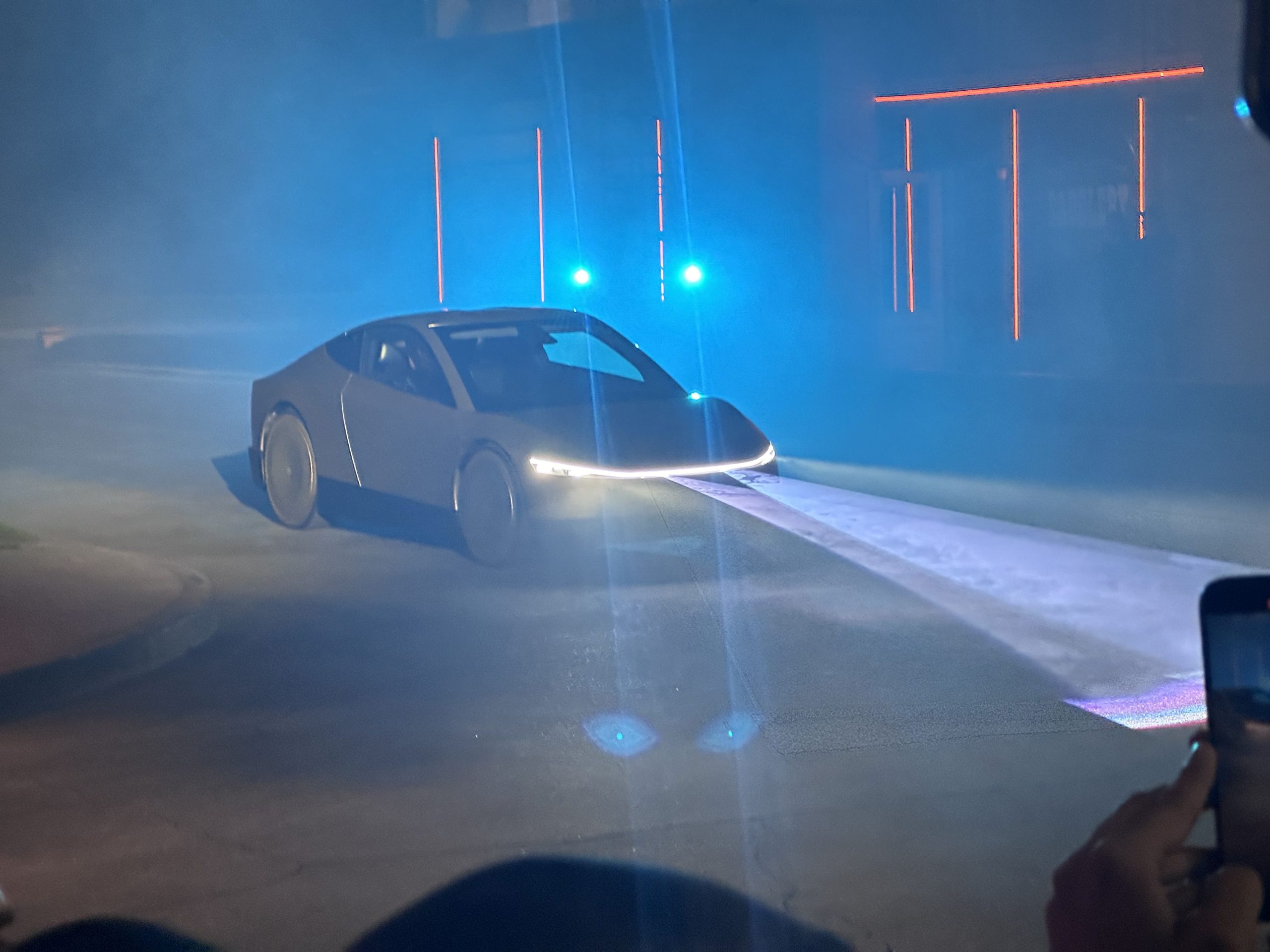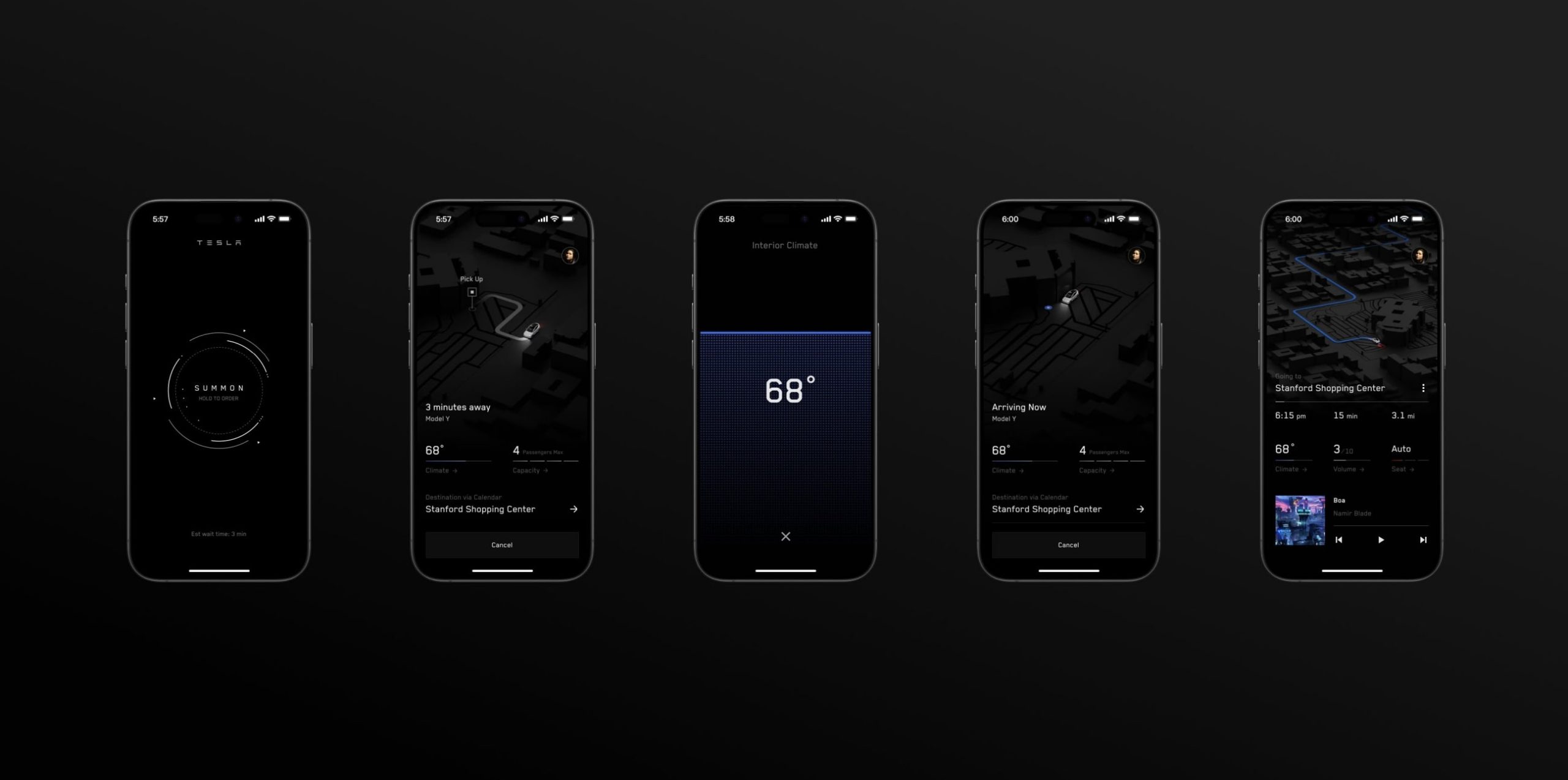

News
Tesla is going in-house for robotaxi platform, says one competitor
Tesla and CEO Elon Musk have doubled down on plans to deploy in-house robotaxi ride-hailing services, as highlighted in a recent conversation with Uber’s top executive.
Uber CEO Dara Khosrowshahi says that Musk was not interested in talking about utilizing the Uber platform for Tesla’s future robotaxis, as detailed in a recent report from Fortune. Khosrowshahi says that he has spoken with Musk and that the company is looking to stay in-house with the robotaxi, which is consistent with its recent release and longtime teasing of a ride-hailing platform.
Credit: Tesla
The executive also points to Tesla’s competitive status with Alphabet-owned Waymo, which is currently already operating paid driverless ride-hailing services in a handful of cities in the U.S.
“I’ve had conversations with him at this point,” Khosrowshahi said on Friday, during an interview with Bloomberg TV in Miami. “They want to build it alone, so to some extent in Austin, we and Waymo will be competing with Tesla when they launch… Life is long, but we would love to partner with them.”
Despite this, Khosrowshahi said that it could make “a lot of economic sense” for the companies to work together, and for Uber’s platform to support Tesla’s initial robotaxi rollout.
“What we bring is demand to the AV ecosystem when demand often is quite variable.”
READ MORE ON TESLA’S ROBOTAXIS: Tesla’s FSD bashed by Zoox executive ahead of robotaxi rollout
Tesla initially shared a teasers of a mobile app UI for ride-hailing last April during the company’s Q1 2024 shareholder’s deck. The company has also said that it’s already testing a ride-hailing service with employees in both the Bay Area, California and in Texas, near its Fremont and Austin factories.
It also comes after Tesla revealed its two-seat, steering wheel-less “Cybercab” in October, on which Teslarati reported from the “We, Robot” unveiling event.
🎥: Our FULL first ride in the @Tesla Cybercab pic.twitter.com/6gR7OgKRCz
— TESLARATI (@Teslarati) October 11, 2024
Our first good looks at the Tesla Cybercab wheels and brake calipers.
At “We, Robot,” the wheels were concealed by gold covers. 🤖
What are your thoughts on the first looks at a potential wheel design? https://t.co/j6YDe4YLHx pic.twitter.com/Na0Uk4RfXX
— TESLARATI (@Teslarati) October 28, 2024
The Cybercab’s eventual wide-scale release, alongside expected “Unsupervised” versions of Full Self Driving (FSD) — which are slated to start rolling out this June — are in direct competition with Waymo, Amazon-owned Zoox, Uber’s ride-hailing software, and a handful of other companies in the emerging ride-hailing and driverless robotaxi businesses.
Tesla also started alluding to a mobile ride-hailing app in its source code earlier this month, quietly deploying an upcoming screen that will let users rate their ride-hailing experiences—though it isn’t expected to go full consumer mode anytime soon.
What are your thoughts? Let me know at zach@teslarati.com, find me on X at @zacharyvisconti, or send us tips at tips@teslarati.com.
Tesla eyes first city for Robotaxi operation with preliminary talks
Need accessories for your Tesla? Check out the Teslarati Marketplace:

Elon Musk
Delaware Supreme Court reinstates Elon Musk’s 2018 Tesla CEO pay package
The unanimous decision criticized the prior total rescission as “improper and inequitable,” arguing that it left Musk uncompensated for six years of transformative leadership at Tesla.

The Delaware Supreme Court has overturned a lower court ruling, reinstating Elon Musk’s 2018 compensation package originally valued at $56 billion but now worth approximately $139 billion due to Tesla’s soaring stock price.
The unanimous decision criticized the prior total rescission as “improper and inequitable,” arguing that it left Musk uncompensated for six years of transformative leadership at Tesla. Musk quickly celebrated the outcome on X, stating that he felt “vindicated.” He also shared his gratitude to TSLA shareholders.
Delaware Supreme Court makes a decision
In a 49-page ruling Friday, the Delaware Supreme Court reversed Chancellor Kathaleen McCormick’s 2024 decision that voided the 2018 package over alleged board conflicts and inadequate shareholder disclosures. The high court acknowledged varying views on liability but agreed rescission was excessive, stating it “leaves Musk uncompensated for his time and efforts over a period of six years.”
The 2018 plan granted Musk options on about 304 million shares upon hitting aggressive milestones, all of which were achieved ahead of time. Shareholders overwhelmingly approved it initially in 2018 and ratified it once again in 2024 after the Delaware lower court struck it down. The case against Musk’s 2018 pay package was filed by plaintiff Richard Tornetta, who held just nine shares when the compensation plan was approved.
A hard-fought victory
As noted in a Reuters report, Tesla’s win avoids a potential $26 billion earnings hit from replacing the award at current prices. Tesla, now Texas-incorporated, had hedged with interim plans, including a November 2025 shareholder-approved package potentially worth $878 billion tied to Robotaxi and Optimus goals and other extremely aggressive operational milestones.
The saga surrounding Elon Musk’s 2018 pay package ultimately damaged Delaware’s corporate appeal, prompting a number of high-profile firms, such as Dropbox, Roblox, Trade Desk, and Coinbase, to follow Tesla’s exodus out of the state. What added more fuel to the issue was the fact that Tornetta’s legal team, following the lower court’s 2024 decision, demanded a fee request of more than $5.1 billion worth of TSLA stock, which was equal to an hourly rate of over $200,000.
Delaware Supreme Court Elon Musk 2018 Pay Package by Simon Alvarez
News
Tesla Cybercab tests are going on overdrive with production-ready units
Tesla is ramping its real-world tests of the Cybercab, with multiple sightings of the vehicle being reported across social media this week.

Tesla is ramping its real-world tests of the Cybercab, with multiple sightings of the autonomous two-seater being reported across social media this week. Based on videos of the vehicle that have been shared online, it appears that Cybercab tests are underway across multiple states.
Recent Cybercab sightings
Reports of Cybercab tests have ramped this week, with a vehicle that looked like a production-ready prototype being spotted at Apple’s Visitor Center in California. The vehicle in this sighting was interesting as it was equipped with a steering wheel. The vehicle also featured some changes to the design of its brake lights.
The Cybercab was also filmed testing at the Fremont factory’s test track, which also seemed to involve a vehicle that looked production-ready. This also seemed to be the case for a Cybercab that was spotted in Austin, Texas, which happened to be undergoing real-world tests. Overall, these sightings suggest that Cybercab testing is fully underway, and the vehicle is really moving towards production.
Production design all but finalized?
Recently, a near-production-ready Cybercab was showcased at Tesla’s Santana Row showroom in San Jose. The vehicle was equipped with frameless windows, dual windshield wipers, powered butterfly door struts, an extended front splitter, an updated lightbar, new wheel covers, and a license plate bracket. Interior updates include redesigned dash/door panels, refined seats with center cupholders, updated carpet, and what appeared to be improved legroom.
There seems to be a pretty good chance that the Cybercab’s design has been all but finalized, at least considering Elon Musk’s comments at the 2025 Annual Shareholder Meeting. During the event, Musk confirmed that the vehicle will enter production around April 2026, and its production targets will be quite ambitious.
News
Tesla gets a win in Sweden as union withdraws potentially “illegal” blockade
As per recent reports, the Vision union’s planned anti-Tesla action might have been illegal.

Swedish union Vision has withdrawn its sympathy blockade against Tesla’s planned service center and showroom in Kalmar. As per recent reports, the Vision union’s planned anti-Tesla action might have been illegal.
Vision’s decision to pull the blockade
Vision announced the blockade in early December, stating that it was targeting the administrative handling of Tesla’s facility permits in Kalmar municipality. The sympathy measure was expected to start Monday, but was formally withdrawn via documents sent to the Mediation Institute and Kalmar Municipality last week.
As noted in a Daggers Arbete report, plans for the strike were ultimately pulled after employer group SKR highlighted potential illegality under the Public Employment Act. Vision stressed its continued backing for the Swedish labor model, though Deputy negotiation manager Oskar Pettersson explained that the Vision union and IF Metall made the decision to cancel the planned strike together.
“We will not continue to challenge the regulations,” Petterson said. “The objection was of a technical nature. We made the assessment together with IF Metall that we were not in a position to challenge the legal assessment of whether we could take this particular action against Tesla. Therefore, we chose to revoke the notice itself.”
The SKR’s warning
Petterson also stated that SKR’s technical objection to the Vision union’s planned anti-Tesla strike framed the protest as an unauthorized act. “It was a legal assessment of the situation. Both for us and for IF Metall, it is important to be clear that we stand for the Swedish model. But we should not continue to challenge the regulations and risk getting judgments that lead nowhere in the application of the regulations,” he said.
Vision ultimately canceled its planned blockade against Tesla on December 9. With Vision’s withdrawal, few obstacles remain for Tesla’s long-planned Kalmar site. A foreign electrical firm completed work this fall, and Tesla’s Careers page currently lists a full-time service manager position based there, signaling an imminent opening.








